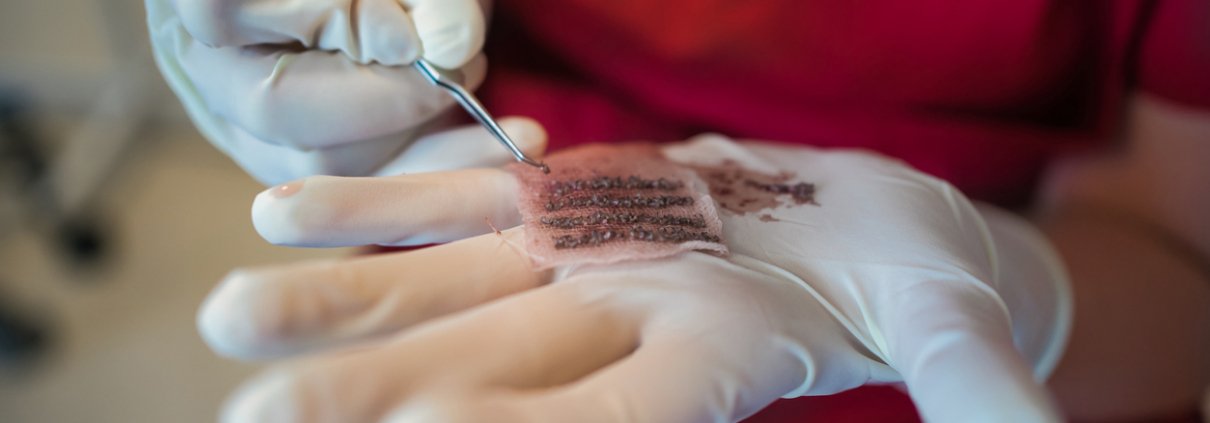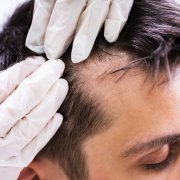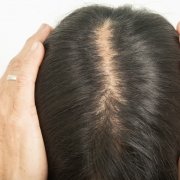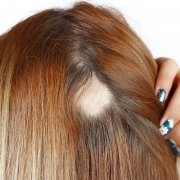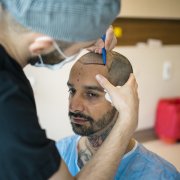Common Misconceptions About Hair Transplant Surgery
Hair transplant surgery is a cutting-edge hair restoration procedure that restores a full head of natural-looking hair to those who have thinning or balding hair.
There are a lot of rumors and misconceptiohair resns about hair transplant surgery. Therefore, before you have any preconceived notions and start making any decision about it, you must know what it is, what is true scientific talk, and what is myth.
Here, we will introduce you to the most common misconceptions about hair transplant surgery.
-
A hair transplant procedure produces unnatural results.
The fact is that because of advancements in both technique and technology, hair transplantation now appears completely natural and has become extremely sophisticated.
The success of a hair transplant, as well as how it looks, is ultimately determined by the surgeon‘s skill and experience. When the team knows how to place each hair follicle and customize it based on the patient’s hairline, the results look natural.
-
Hair transplant surgery is very painful.
You will not feel any pain during surgery, because the operation is done under the influence of local anesthetic, and therefore, the procedure itself is painless and comfortable for patients. After you are done and resting at home, you may feel some pain, which can easily be addressed with pain medication.
-
Hair transplantation provides immediate results.
Hair transplant results, like regular hair growth, do not appear overnight. It will take about 6-9 months after your hair transplant surgery for you to notice new, consistent hair growth.
This waiting period could last up to 12 months for some patients. It’s important to note that during the “shock” or “sleeping” phase, patients may experience hair fall out, which is completely normal. After that, well-anchored roots will begin to grow hair that will look natural and blend in seamlessly with your existing hair.
-
Results are temporary.
The main benefit of a hair transplant procedure is that the results are nearly permanent and visible for a very long time. It’s important to understand that “newly transplanted” hair will begin to fall out around 5-7 weeks after the procedure. This is, however, a natural occurrence and a passing phase. In the next 5-6 weeks, new hair will begin to emerge from the grafts.
-
Large grafts will produce more density.
The density of the hair is determined by the number of grafts transplanted rather than the graft size. Larger grafts, on the other hand, may result in unnatural-looking hair.
-
An older individual should not undergo hair transplantation.
In general, an older person has a better chance of having a successful hair transplant. Hair loss is more likely to be extensive in the future at a younger age because the hair fall pattern is unpredictable.
However, age is not a major factor to determine candidacy for hair transplant surgery. A good surgeon will carefully examine the donor area, determine whether new hair will grow in your scalp after the procedure, and match the texture and quality of your existing hair before deciding whether you are a good candidate for the procedure.
-
Hair transplantation is only for men.
It is a common misconception that baldness and hair restoration procedures are only associated with male pattern baldness. The truth is that hair restoration techniques such as follicular unit transplantation (FUT) and follicular unit extraction (FUE) are suitable for both men and women.
-
You don’t need additional treatment to prevent hair loss after a hair transplant.
That is not true. Hair transplantation cannot prevent further hair loss. Post-transplant medical treatment, which can include a variety of creams and ointments in the form of applications, oral tablets, and PRP injections to correct hormonal imbalances that cause further hair loss, is the only way to prevent hair loss.
-
You should avoid washing your hair after a hair transplant.
The growth of newly grafted hair is unaffected by hair washing once the healing process is complete. The treated area must be kept clean and dry after surgery to avoid infection. Your doctor will tell you when to shower and how to shower safely in the early stages of hair transplantation recovery.
-
Doctors use other people’s hair during surgery.
During the procedure, no other hair is used except your own. Your hair follicles are moved from donor sites on your head to the bald part of your head by the surgeon and his team.
Hair Transplant Services In Kansas City, Des Moines & Liberty, MO
There are many surgical options for hair loss treatment, including FUT and FUE. To help you choose the best treatment method, consider a visit to an experienced hair restoration doctor.
Here at Darling Hair Restoration, we focus on cutting-edge techniques to treat and manage hair loss. Dr. Darling has expertise in both surgical and conservative treatments. You can rest assured that he’ll guide you to the most optimal approach for your needs.
Reach out to us by calling (816) 792-3400 or by filling out our online contact form. We look forward to serving you!

